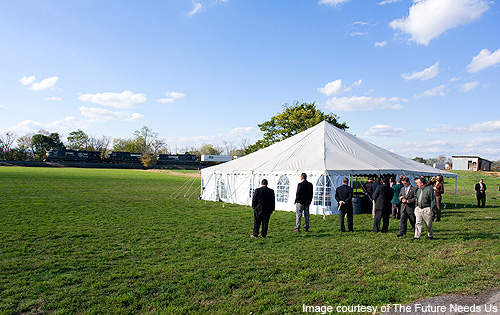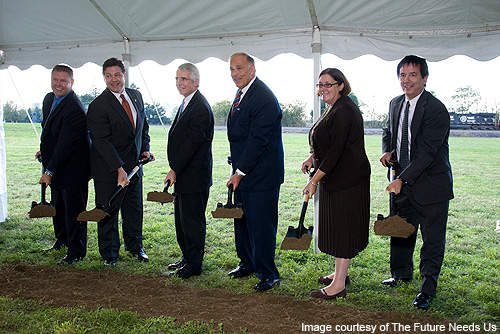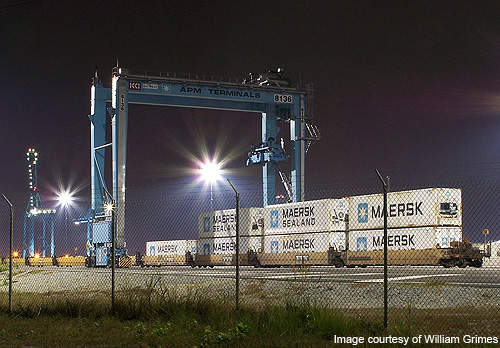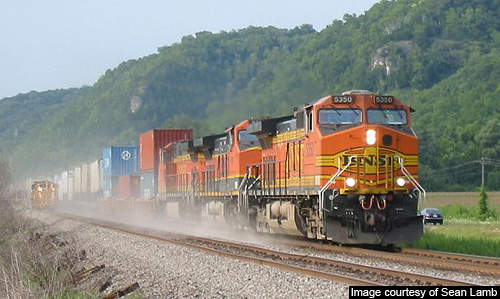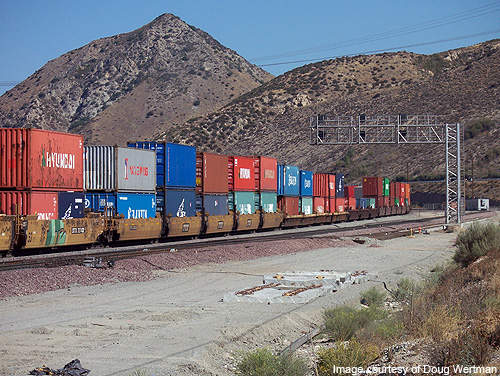The Crescent Corridor freight rail improvement project is a multi-state rail development programme undertaken by owner and operator Norfolk Southern Railway in partnership with the US Department of Transportation and the states of Alabama, Pennsylvania, Virginia, Tennessee and Mississippi.
The project will connect the existing rail lines with 11 intermodal facilities to enhance freight transportation and distribution services in the south-east, Gulf Coast and mid-Atlantic markets. It is intended to provide improved intermodal rail freight services along the Crescent Corridor, which has witnessed drastic growth in interstate freight volumes resulting in traffic congestion and heavy carbon emissions.
At an estimated cost of $2.5bn, the project includes the straightening of curved routes, the construction and expansion of terminals, the laying of passing routes at the terminals and the addition of signals. Construction is underway at various terminal locations and is expected to be fully developed by 2020.
The project is expected to provide economic benefits to the 13 states that host the Crescent Corridor. It will serve nearly 30% of US manufacturing output, 24% of the interstate highway lanes and will create 47,000-73,000 new jobs during 2010-30.
It will also save the US economy around $576m through reduced highway congestion. It is also expected to take around one million trucks off the highways and save 170 million gallons of fuel a year. All in all, the project will reduce carbon emissions by up to two million tons a year.
Line and routes
The Crescent Corridor is a 2,500-mile freight rail network that runs through 13 states from the Gulf Coast to mid-Atlantic. The rail line connects Memphis and New Orleans to New Jersey and runs parallel to interstate highways I-20, I-40, I-59, I-75, I-76, I-77, I-78, I-81, I-85 and I-95.
Project
The expansion programme was conceived in 2003 by the state of Virginia; Tennessee and Pennsylvania subsequently became involved out of a desire to divert the growing freight volumes along highways I-40, I-81 and I-95.
According to the survey conducted by the Federal Highway Administration, road traffic had grown to twice the amount of that for which the highways were designed. Trucks travelling on the interstate highways accounted for 30% of vehicular congestion, and commercial vehicle miles had grown 105% while lane miles grew by only 6%. Construction and maintenance of highways involved huge capital expenditures. Hence a cost-effective and long-term sustainable freight rail service was chosen as the best option by the respective state governments.
Considering the magnitude of the project, a cost-benefit analysis and economic feasibility study for the initial project phase was carried out by Cambridge Systematics on behalf of Norfolk Railway.
As per the analysis, the project will generate revenue of $16 for every $1 of investment between 2011-30, and $25 for every $1 of investment by 2040.
Development
The project is the largest intermodal freight programme that is being pursued to increase freight capacity after the interstate highway system.
Once completed, the Crescent Corridor will have new intermodal terminals at Memphis (Tennessee), Birmingham (Alabama), Charlotte (Tennessee), Greencastle (West Virginia), Roanoke (Virginia) and Knoxville (Tennessee).
Terminals at New Orleans (Louisiana), Harrisburg (Pennsylvania), Philadelphia (Pennsylvania), Morrisville (Virginia)and Bethlehem (Pennsylvania) will be expanded to facilitate greater freight rail volumes.
The initial phase involves construction of three new intermodal terminals in Memphis, Birmingham and Franklin County (Pennsylvania) and the expansion of the existing terminals in Harrisburg and Philadelphia.
The project will also include the laying of 393 miles of new rail track, ten passing tracks and route enhancements in the participating states and 557 individual speed improvements.
A fleet of 28 trains will operate on the fully developed Crescent Corridor.
Project finance
The project has been financed by the Commonwealth of Pennsylvania, Commonwealth of Virginia, Norfolk Southern Railway and the US Department of Transportation.
In 2007, Virginia invested $43m to improve parts of the Crescent Corridor and $60m towards additional track capacity and access roads and terminals near Roanoke.
The state of Pennsylvania is investing $45m, which will be used over a three-year period for the construction of terminals in Greencastle and Philadelphia.
Norfolk Southern Railway will be contributing more than $264m by 2013. Of the total amount, $112m will be invested in property, design, permissions, construction and crane purchases in terminals, and $152m will be spent towards route improvements in the five participating states.
The project has also received $300m grant from Transportation Investment Generating Economic Recovery (TIGER) under the American Recovery and Reinvestment Act of 2009. This amount will partly fund the construction of intermodal facilities ($225m) and route improvements in Virginia and Mississippi ($75m).
The states of Alabama and Tennessee received a grant of $105m from TIGER towards the construction of intermodal facilities in Birmingham and Memphis in February 2011.
Infrastructure
The new terminals will have pad and support tracks, trailer and container parking areas, lead tracks and related ancillary buildings.
Harrisburg and Philadelphia intermodal terminals will have an additional pad, support tracks, and trailer and container parking areas. The new intermodal terminals will provide unique traffic and freight-flow features.
An advanced proprietary automatic gate system will be installed at the terminals to regulate the movement of shipments in and out of the terminals. The system will reduce truck queuing and fuel usage and provide cost-effective service for just-in-time logistics. It will also contribute towards reducing any associated emissions caused by idling trucks.
A radio-frequency transmission system will be installed at the terminals for work order communication to cranes and hustler trucks that are equipped with mobile computers. This system will result in effective use of facility equipment and reduce on-site fuel consumption and emissions.
As the new terminals will be constructed near industrial parks containing intermodal shippers, the facility will reduce drayage costs by ensuring a very short drayage distance.
Construction
Rail enhancement works were completed in Virginia in August 2010. It involved placing of passing tracks between Manassas and Front Royal, laying of five miles of double track near Virginia Inland Port and increased train speeds through Riverton Junction, which is near Front Royal.
The first of the three intermodal facilities broke ground in October 2010 at Greencastle in Franklin County.
At an estimated cost of $95m, the new facility is being constructed on a 200-acre site adjacent to the Antrim Commons Business Park. It is expected to open in 2012 to serve the mid-Atlantic region.
Construction of the 380-acre Memphis Regional Intermodal Facility near Rossville (Alabama) and the 261-acre Birmingham Intermodal Facility near McCalla (Tennessee) commenced in December 2010.

